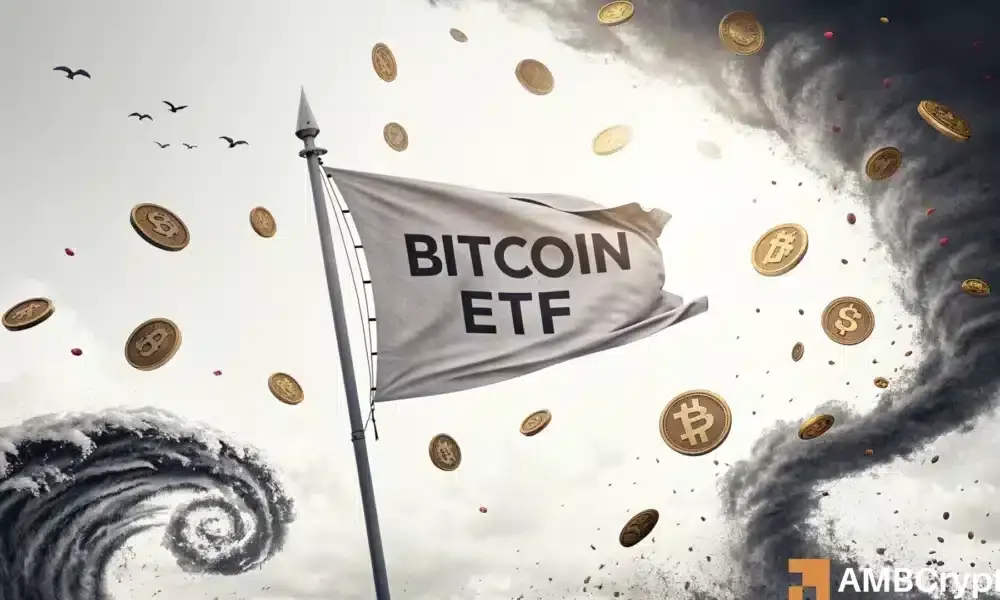
The market flinched, Bitcoin ETFs didn’t – A structural shift you need to watch!
As the crypto market continues to navigate uncharted waters, a recent trend has emerged that could have far-reaching implications for investors and traders alike. In this article, we’ll be exploring the extraordinary circumstances surrounding Bitcoin ETF inflows and what it means for the future of cryptocurrency.
Since June 9th, Bitcoin ETFs have seen an astonishing $7.78 billion in net inflows. This staggering figure stands in stark contrast to late May’s events, where a precipitous drop in Bitcoin’s price resulted in an unprecedented $1.3 billion in outflows from these very same funds.
The disparity between the two periods is more than just a minor fluctuation; it represents a seismic shift in the market’s structure that demands attention and analysis. While one might expect institutional investors to flee the scene during times of volatility, their decision to pour billions into Bitcoin ETFs instead has sent shockwaves through the community.
But what’s behind this dramatic turn of events? In essence, we’re witnessing a profound transformation of Bitcoin’s role within the broader financial landscape. As institutions increasingly turn to these funds as a means of hedging risk and diversifying portfolios, they are simultaneously transforming themselves into an ever-present force that can stabilize market fluctuations.
The implications of such a development are too great to ignore. For one, it means that Bitcoin ETFs have become the de facto “whale” class in cryptocurrency markets, capable of absorbing large quantities of capital during periods of heightened uncertainty. This paradigm shift is far-reaching and has significant repercussions for both short-term and long-term investors.
Another consequence of this structural shift lies in its potential to reshape the nature of risk management in the crypto space. As institutions continue to pour money into these funds, they will be seeking a higher return on their investments while still preserving capital during turbulent times.
This newfound reliance on Bitcoin ETFs is poised to create a feedback loop where institutional investors drive demand for Bitcoin, and their increased exposure prompts further growth and adoption. In the process, the entire ecosystem stands to benefit from a reevaluation of traditional risk management strategies and potentially even the emergence of novel hedging tools.
In conclusion, it’s essential that traders, analysts, and speculators take heed of this critical shift in market dynamics. The recent influx of capital into Bitcoin ETFs is not merely a one-off; rather, it signals a tectonic change that will have lasting consequences for our industry.
As the crypto space continues to evolve at an exponential rate, remaining vigilant about such structural shifts has never been more crucial.
Source: ambcrypto.com


